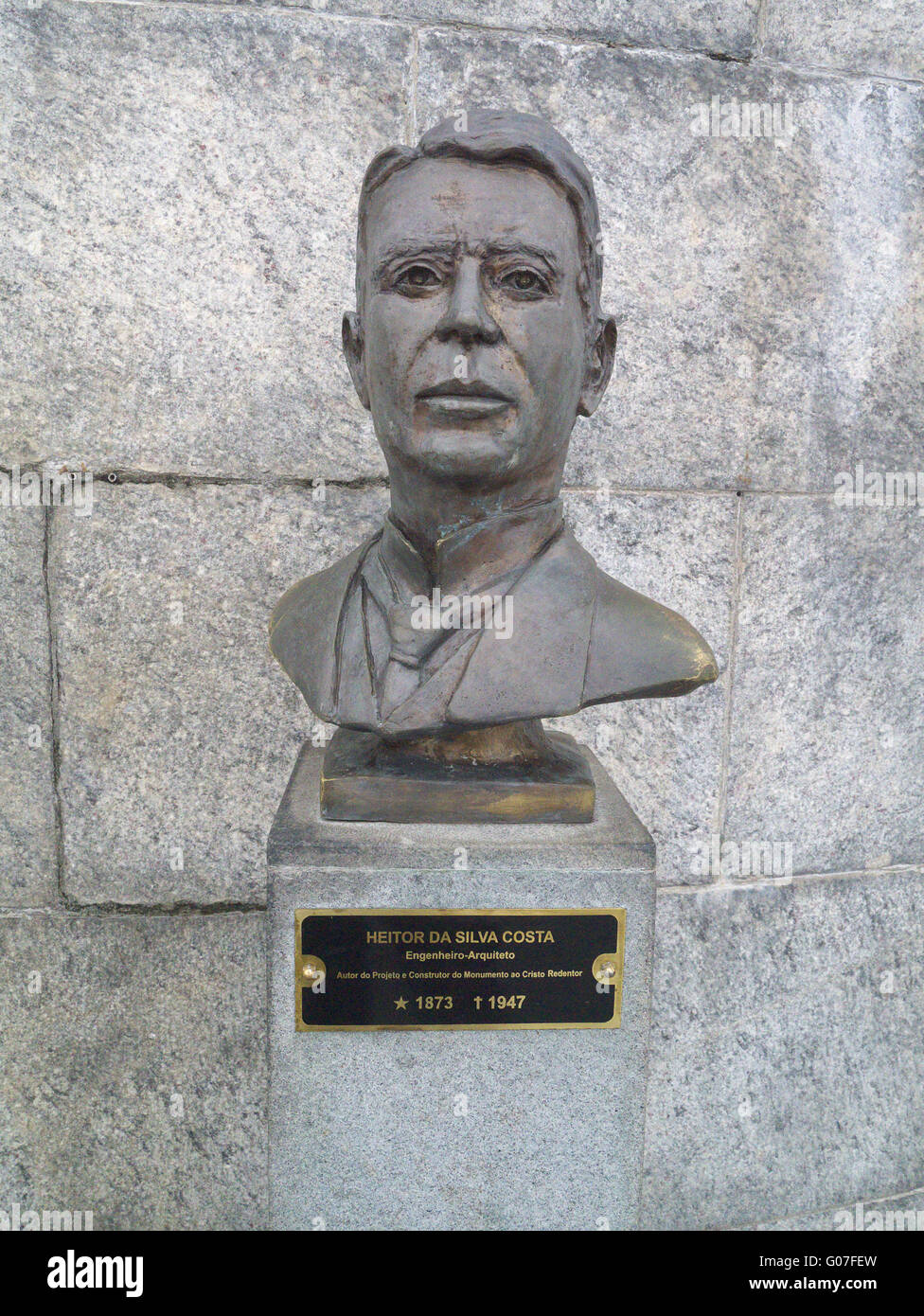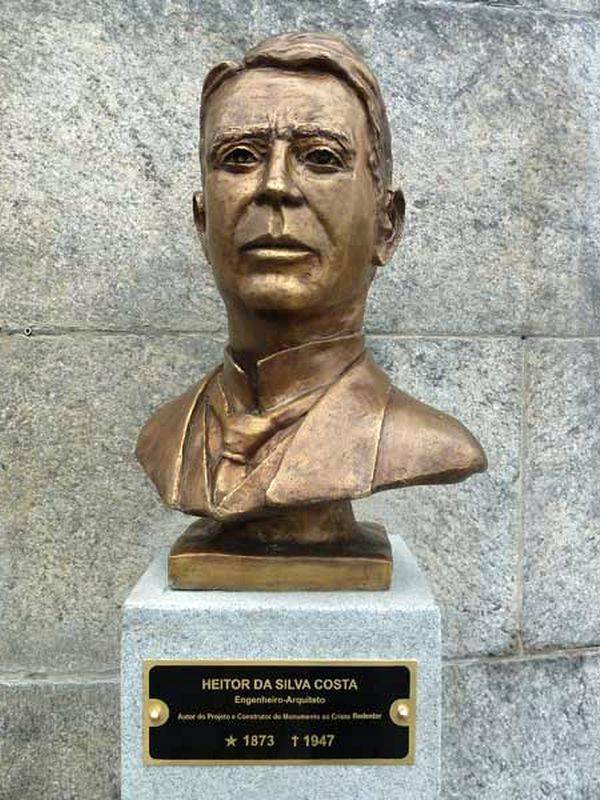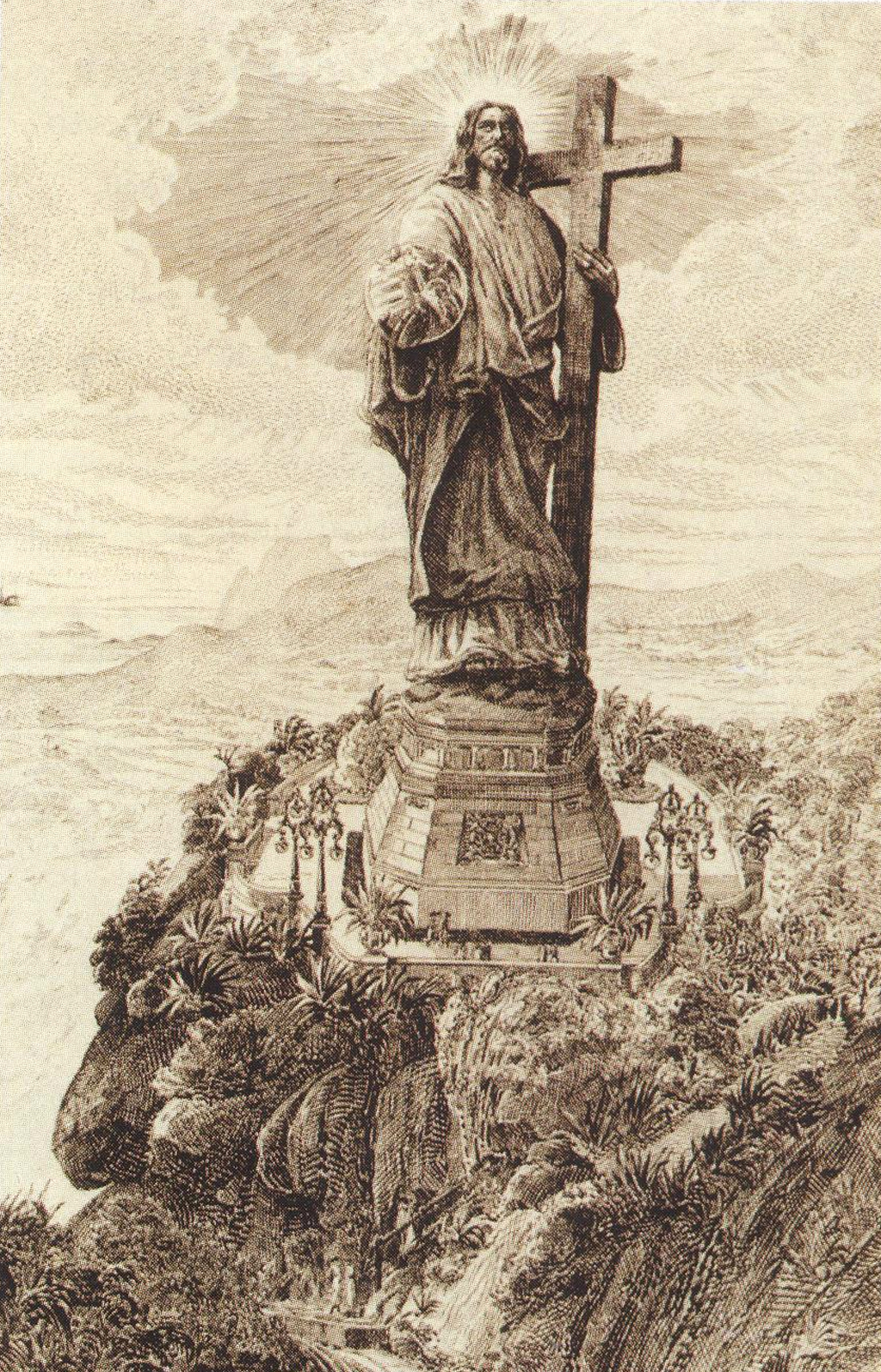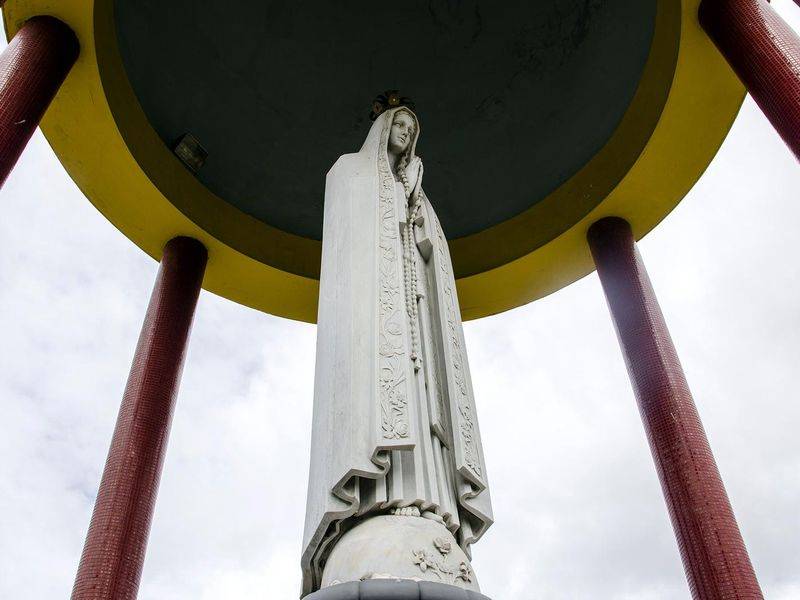
Büste von Heitor da Silva Costa am Fuße des die Christusstatue in Rio
Heitor da Silva Costa, a Brazilian engineer, won it. His initial vision of Christ was a standing figure, holding a large cross with one hand and a globe in the other. However, this idea caused.

Heitor da Silva Costa Alchetron, The Free Social Encyclopedia
Heitor da Silva Costa, a Brazilian engineer, and architect designed the monument. Da Silva Costa drew a figure of Christ when the foundation was placed in 1922. While he won the sculpture design contest, it's possible that the open concept was the brainchild of Carlos Oswald, who worked with da Silva Costa on the finalized versions..

Heitor SILVA Universidade Federal do Rio Grande do Sul, Porto Alegre
After its Polish rival, Christ the Redeemer is the largest Art Deco statue in the world. It was designed by Polish-French sculptor Paul Landowski, before being constructed by Brazilian engineer Heitor da Silva Costa in collaboration with French engineer Albert Caquot.The face was the work of Romanian artist Gheorghe Leonida.

Gonçalves dias canção do exílio ijucapirama romantik poet, heitor da
Heitor da Silva Costa (Rio de Janeiro, 25 de julho de 1873 — Rio de Janeiro, 21 de abril de 1947) foi um engenheiro brasileiro e autor de um dos maiores monumentos do Brasil, o Cristo Redentor. [1] [2] Biografia. Engenheiro e.

Heitor da Silva Costa, bust, at the Corcovado, Rio de Janeiro, Brazil
Heitor da Silva Costa was a Brazilian civil engineer, designer and constructor of the Christ the Redeemer monument in Rio de Janeiro. In 1924, he won a competition for the construction of the monumental Christ the Redeemer statue Monumento Cristo Redentor on Corcovado in Rio de Janeiro organized by the Catholic Church. The reason for the competition was the one hundred year anniversary of the.

Free download Christ the Redeemer Statue Corcovado Sculpture Figurine
Heitor da Silva Costa, E ngineer Statue of Christ the Redeemer, Rio de Janeiro, Brazil. In 1922, the Catholic circle of Rio decided to organize the construction of a huge Christ statue on a hill overlooking the bay of Rio de Janeiro. After receiving many proposals, the association eventually took up with the engineer Heitor da Silva Costa, and.
Coluna Baby Garroux Poucos sabem quem esculpiu o Cristo redentor no Rio
Christ the Redeemer was created by French sculptor Paul Landwoski and Brazilian engineer Heitor da Silva Costa, working with French engineer Albert Caquot. It weighs 635 metric tons. The face of the Christ the Redeemer statue was created by Gheorghe Leonida, a Romanian sculptor living in Paris hired by Landowski.

Heitor da Silva Costa
Heitor da Silva Costa, a Brazilian engineer, and Paul Landowski, a Polish-French sculptor, were the designers and engineers instrumental in constructing Christ the Redeemer. Silva Costa was responsible for the project's overall design and engineering aspects, while Landowski crafted the iconic statue of Jesus Christ. Silva Costa's role was.

Thomaz costa chiquititas giphy, heitor da silva costa, pelo, sí png
Christ the Redeemer statue under construction (1931 circa) by Holland S. H. Instituto Moreira Salles. The statue was constructed between 1922 and 1931 by Brazilian engineer Heitor da Silva Costa and French engineer Albert Caquot. The face of Christ was designed and sculptured by the Romanian artist Gheorghe Leonida.

Textile Pornographic film, Heitor Da Silva Costa, textile, pornographic
Other articles where Heitor da Silva Costa is discussed: Christ the Redeemer:.designer, and the Brazilian engineer Heitor da Silva Costa was chosen on the basis of his sketches of a figure of Christ holding a cross in his right hand and the world in his left. In collaboration with Brazilian artist Carlos Oswald, Silva Costa later amended the plan; Oswald has…

Christ The Redeemer by Audry Carnivale
Heitor da Silva Costa, a Brazilian engineer was chosen on the merit of his sketches, although his original idea was of Christ with a cross and a miniature world sphere in his hands. Upon catching the name "Christ with a ball", it was Carlos Oswald, a Brazilian artist, whose design of Christ's standing pose with arms spread wide in an Art Deco.

Como foi construído o Cristo Redentor? Super
Christ The Redeemer (Portuguese: Cristo Redentor, standard Brazilian Portuguese: [ˈkɾistu ʁedẽˈtoʁ]) is an Art Deco statue of Jesus Christ in Rio de Janeiro, Brazil, created by French-Polish sculptor Paul Landowski and built by Brazilian engineer Heitor da Silva Costa, in collaboration with French engineer Albert Caquot. Romanian sculptor Gheorghe Leonida sculpted the face.

Pin em PERSONAGENS HISTÓRICOS E CONTEPORANEOS BRASILEIROS
Heitor da Silva Costa was born on July 25, 1873 in Rio de Janeiro, in the province of Doctor Jose da Silva Costa and his wife Eleia Guimaraes da Silva Costa. He started classical studies at the age of 8 and entered the Abilio college in 1881. remained until 1886. From 1886 to 1889 it integrated the school Sao Pedro of Alcantara.

The throne of Fatima
The Art Deco statue was designed Heitor da Silva Costa and Carlos Oswald - Brazilian engineer and artist, respectively. In 2007, Christ the Redeemer was voted on and recognized as one of the New Seven Wonders of the World. The magnificent edifice is regarded as the fourth biggest statue of Jesus Christ worldwide, as of 2022.

Brazil00965 Heitor da Silva Costa PLEASE, NO invitation… Flickr
The monument, masterminded by Rio-born architect Heitor da Silva Costa (1873-1947) and sculpted by French artist Paul Landowski (1875-1961), was the central theme of the Conference Paul Landowski which took place in March 2019 in Saint-Quentin's Palais de L'Art Déco in the Aisne department in northern France. The two main guests of the talks were two Rio-born professionals: Marcio Roiter.

Bust of Heitor da Silva Costa at the foot of the Christ the Redeemer
Heitor da Silva Costa (25 July 1873 - 21 April 1947) was a Brazilian civil engineer, designer and constructor of the Christ the Redeemer monument in Rio de Janeiro. In 1924, he won a competition for the construction of the monumental Christ the Redeemer statue Monumento Cristo Redentor on Corcovado in Rio de Janeiro organized by the Catholic.